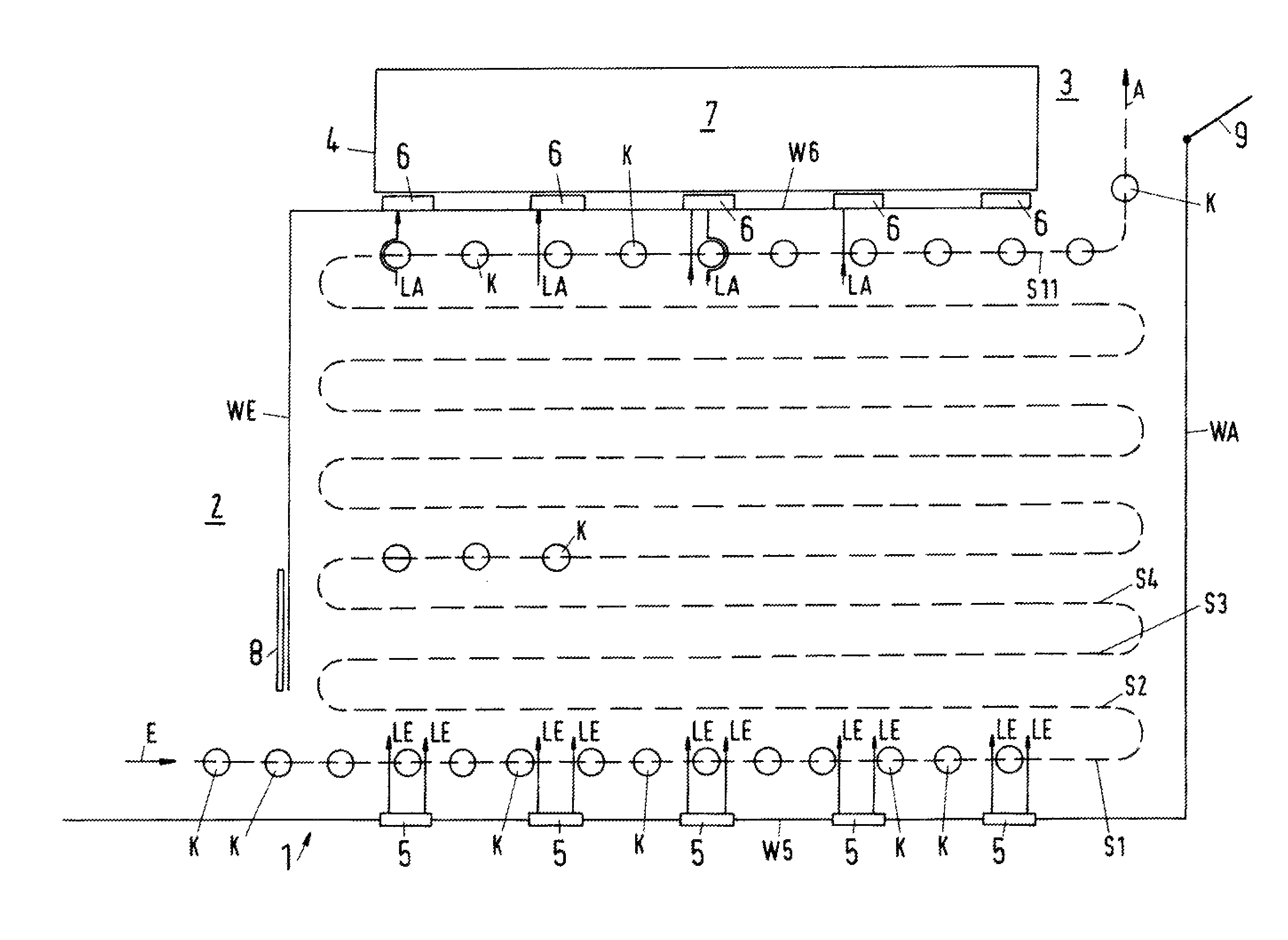Hygienic dehumidification of animal carcasses warm from slaughter
a technology of animal carcasses and dehumidification, which is applied in the field of hygienic dehumidification of animal carcasses warm from slaughter, can solve the problems of loss of mass of surface-dry carcasses of slaughtered animals, disadvantageous economic balance of invention, and loss of carcasses, etc., and achieve the effect of minimizing loss
- Summary
- Abstract
- Description
- Claims
- Application Information
AI Technical Summary
Benefits of technology
Problems solved by technology
Method used
Image
Examples
Embodiment Construction
[0063]The FIGURE shows a dripping stretch 1 with entryway E in the wall WE of the preceding slaughterhouse stretch 2 and the exit A in the wall WA to the scale 3 and to the cold store, not illustrated. The entryway E can be closed by door 8, the exit A can be closed by door 9, for example, in idle periods or for separating the dripping stretch when slaughtering is stopped or slowed down. Between entryway E and exit A, an over-head suspension conveyor, known in general, extends with meandering tracks S1, S2, S3, S4 to S11.
[0064]On the suspension conveyor S1-S11 numerous pig halves or slaughtered animal carcasses K can be seen that are transported by the suspension conveyor in loops through the room for final bleeding and dripping off of excess water.
[0065]In the walls W5 and W6 there are inlet openings 5 and suction openings 6 that are provided with fans (not shown); 5 each per wall with each having approximately 1 m2 of total opening size that however can also be only partially open...
PUM
| Property | Measurement | Unit |
|---|---|---|
| speeds | aaaaa | aaaaa |
| temperature | aaaaa | aaaaa |
| temperature | aaaaa | aaaaa |
Abstract
Description
Claims
Application Information
 Login to View More
Login to View More - R&D
- Intellectual Property
- Life Sciences
- Materials
- Tech Scout
- Unparalleled Data Quality
- Higher Quality Content
- 60% Fewer Hallucinations
Browse by: Latest US Patents, China's latest patents, Technical Efficacy Thesaurus, Application Domain, Technology Topic, Popular Technical Reports.
© 2025 PatSnap. All rights reserved.Legal|Privacy policy|Modern Slavery Act Transparency Statement|Sitemap|About US| Contact US: help@patsnap.com


